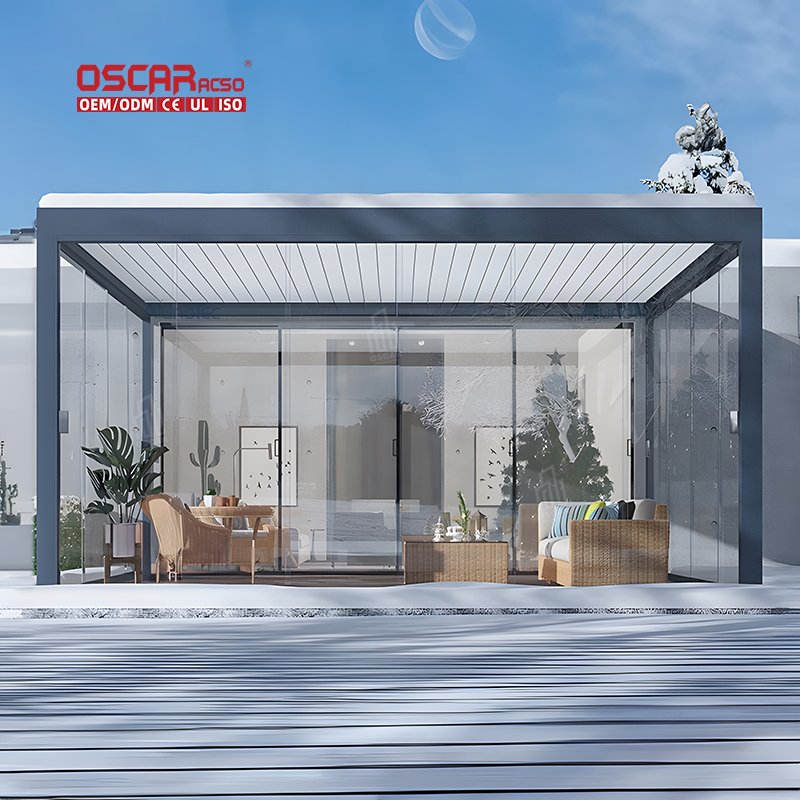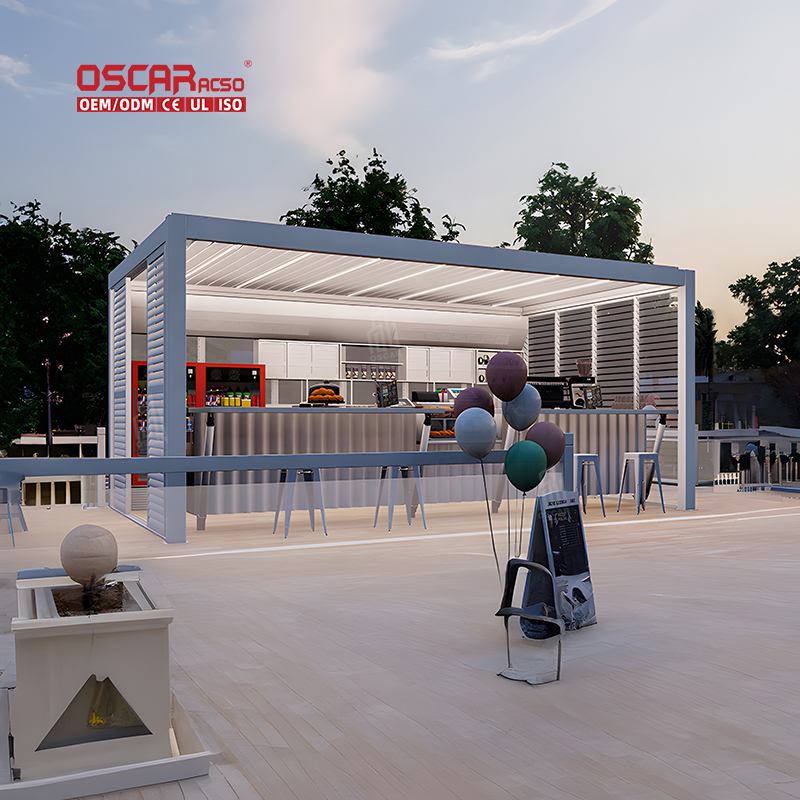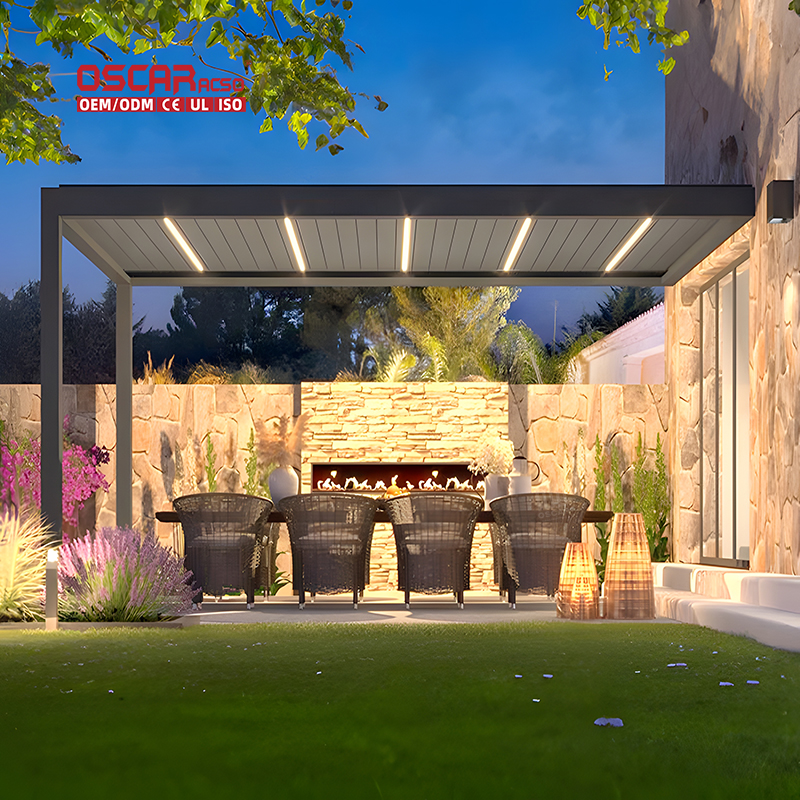Hurricane-Proof Pergolas: Myth or Reality, Unveiling the Truth
**Are pergolas hurricane-proof? ** This is a crucial question for homeowners in storm-prone regions who dream of enj...

**

Are pergolas hurricane-proof? ** This is a crucial question for homeowners in storm-prone regions who dream of enjoying their outdoor spaces without fear. The short answer is: no pergola is 100% “hurricane-proof,” but with the right engineering, materials, and installation, they can be highly wind-resistant and built to survive extreme weather. Let’s dive into the details.
🛡️ What Makes a Pergola Hurricane-Resistant?
The ability of a pergola to withstand hurricanes isn’t magic; it’s a result of specific engineering choices. Three pillars are fundamental: robust materials, intelligent design, and professional installation.
- •
Material Matters: Not all materials are created equal. While traditional wood pergolas can typically resist winds of 50-70 mph , they are generally less wind-resistant than modern alternatives. For high-wind areas, aluminum is a superstar. High-quality aluminum pergolas are lightweight, corrosion-resistant, and can be engineered to withstand winds exceeding 130 mph . Powder-coated or anodized finishes combat fading. Other strong contenders include galvanized steel and reinforced vinyl .
.jpg)
- •
Design & Engineering: Design is paramount. Louvered roof systems are a game-changer. Unlike solid roofs that act like sails, adjustable louvers can be set to a 45-degree angle during storms, allowing wind to pass through dramatically reducing uplift pressure and the risk of structural failure . Furthermore, features like cross-bracing and aerodynamic shapes enhance stability. Crucially, any hurricane-resistant pergola must meet local building codes, which in the US often mandate a minimum wind load standard of 105 mph .

- •
Anchoring and Installation: The strongest materials are useless if not properly secured. Deep concrete footings (at least 18 inches deep) are essential to anchor the posts firmly into the ground, preventing the structure from being uprooted . Using heavy-duty metal brackets, lag bolts, and screws instead of nails provides a superior hold. For ultimate peace of mind, consulting a structural engineer and working with a reputable installer who understands local wind load requirements is non-negotiable, especially in places like Miami-Dade County which have strict codes .
💨 Wind Ratings Demystified: How Much Wind Can a Pergola ReallyHandle?
Wind ratings can be confusing. It’s not a one-size-fits-all number. Here’s a breakdown:

- •
Standard Wood Pergola: 50-70 mph (moderate storms) .
- •
Well-Engineered Aluminum Pergola: Up to 130 mph (major hurricane strength) .
- •
The Gold Standard (e.g., Bon Pergola): Some premium models, like the Bon Pergola Weatherproof model, are tested to withstand up to 120 mph winds with louvers closed. Their advice for winds over 80 mph is to open the louvers to let wind pass through .
Always look for a manufacturer that provides a standard engineering packet to verify these claims and ensure compliance with local codes .
🛠️ Proactive Protection: How to Fortify Your Pergola
Beyond choosing a strong structure, you can take active steps to protect your investment when bad weather forecasts.
- •
Create Windbreaks: Planting hedges or shrubs strategically around your pergola can help dissipate wind force before it hits the structure .
- •
Secure Loose Items: Before a storm, remove hanging plants, furniture, decorations, and any lightweight objects that could become projectiles and cause damage .
- •
Regular Maintenance: Inspect your pergola regularly. Tighten any loose bolts or screws, check for signs of rust or rot, and clean debris off the roof to prevent added wind resistance and water pooling .
🤔 Attached vs. Freestanding: Which is Better in Wind?
Both attached and freestanding pergolas can achieve high wind ratings, but they have different considerations. An attached pergola benefits from the stability of being anchored to your home, which can provide a buffer . A freestanding pergola must be exceptionally well-anchored at all points to the ground to prevent shifting. Proper engineering is critical for both, but a freestanding structure often requires a more robust foundation to achieve the same level of stability .
⚠️ Common Pitfalls to Avoid
The path to a storm-ready pergola is paved with potential mistakes. Avoid these common errors:
- •
Choosing on Price Alone: The cheapest option often cuts corners on material thickness, engineering, and proper anchoring systems .
- •
Ignoring Local Codes: Permitting and building codes exist for safety. An installer should handle permits and ensure the structure is built to meet your area’s specific wind speed requirements .
- •
Using Nails Instead of Screws/Bolts: Nails can work loose under constant stress and vibration, compromising integrity over time .
- •
Neglecting the Foundation: Surface-mounted or shallow footings are a recipe for disaster in high winds. Depth and stability are everything .
So, are pergolas hurricane-proof? The truthful answer is that while no structure is entirely immune to the absolute worst of nature’s fury, a meticulously engineered, professionally installed pergola built with premium materials like aluminum and featuring a louvered roof can absolutely be hurricane-resistant. It can safely weather severe storms and provide decades of enjoyment. The key is to invest in quality engineering and installation from the start, turning your backyard dream into a resilient reality.

